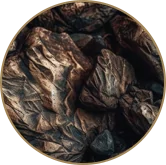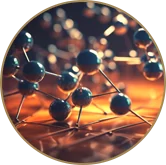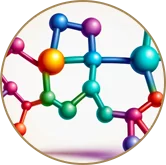Shilajit, also recognized as mineral pitch, is a natural substance noted for its potential health benefits. A study published in the International Journal of Ayurveda Research (2010) suggests that Shilajit may possess antioxidant, anti-inflammatory, and neuroprotective properties. Cherished since ancient times, discussions of Shilajit’s potential to rejuvenate the mind, body, and spirit have persisted across generations. Its intriguing nature continues to be a topic of exploration today, as the ancient pitch garners renewed interest worldwide. However, while research is ongoing, the benefits of Shilajit are yet to be fully substantiated.
What is Shilajit and Why Should You Care?
Researchers are gradually uncovering what many Eastern cultures have long believed regarding the benefits of Shilajit. The growing body of scientific evidence is beginning to shed light on its claimed benefits, contributing to its high price point.
If you’re considering taking Shilajit, it’s crucial to prioritize product quality. Seek verified proof of safety and efficacy. Opt for products that have been protected by patents, as this can be an indicator of substantial efforts made to ensure the potency and purity of Shilajit. Exercise caution with raw, unpurified Shilajit and counterfeit products, as these could pose risks to your health and well-being.
Scientifically Proven Health Benefits of Shilajit
Shilajit has been reputed for its health benefits over millennia. Today, we turn to scientific research to ascertain the veracity of such ancient claims. Among the numerous health benefits ascribed to shilajit by its proponents, which ones have garnered scientific support? In this section, we delve into that very inquiry.
Shilajit’s Role in Energy Boosting
One of the notable attributes of shilajit is its purported adaptogenic properties, which may contribute to enhanced energy utilization from dietary intake. This feature is what perhaps earns it the designation of a Rasayana (rejuvenator) in the Ayurvedic tradition, with other Eastern medical practices also holding shilajit in high regard over the ages.
The process of nutrient utilization entails the breakdown of larger molecules into smaller, more manageable ones that can be effectively utilized by the body. Even a nutritious diet sometimes falls short, as not all the energy derived from contemporary crops is immediately accessible for bodily use.
Shilajit itself is a complex substance encompassing essential trace minerals and other nutrients, primarily obtained from decaying plant material intertwined with humic and fulvic acids, along with minerals indigenous to the soil. It’s hypothesized that dibenzo-ɑ pyrones (DBPs) are the principal constituents attributing to shilajit’s adaptogenic qualities. DBPs are metabolites originating from decomposing organic material.
One study showcased in Pharmacologyonline posits that DBPs facilitate the conversion of food energy into adenosine triphosphate (ATP), which is a form of energy that the human physique can readily utilize to fuel various physiological processes. A higher ATP level implies that a greater portion of food energy is being converted, thus availing more energy for tissue construction and repair. [1]
Furthermore, shilajit may potentially heighten the health and wellness advantages obtainable from medicinal herbs. In the context of diabetes management, utilizing shilajit might aid in enhancing the effective energy utilization from sugars.
Shilajit and Chronic Fatigue Syndrome
Studies have hinted at the possibility of shilajit addressing certain symptoms associated with Chronic Fatigue Syndrome (CFS). In one study, researchers orchestrated three distinct treatment groups, standardizing shilajit for DBPs, DBP-chromoproteins, and fulvic acid.
The findings suggested that shilajit could potentially modulate fatigue symptoms, fostering a quicker recuperation. Upon analysis, researchers postulated that shilajit significantly restored enzymes typically implicated in CFS, and appeared to mitigate oxidative stress. [2]
Shilajit’s Role in Stress and Anxiety Alleviation
Shilajit may possibly aid in quicker recuperation from stress, which often intersects with symptoms of low energy and chronic fatigue. As stress is linked with anxiety and depression, shilajit might be beneficial for individuals at risk for mental health disorders, although further research is requisite to affirm this connection.
The 2019 Global Burden of Disease report.denotes depressive disorders as one of the top ten disease causes, underscoring that self-harm is among the three predominant factors in the observed decline in Disability Adjusted Life Years (DALY) for individuals aged 10 to 24. [3]
Symptoms of depression include sudden weight gain or weight loss, sleeplessness, fatigue, and moodiness. There is some evidence that shilajit may be able to support the body to resist these signs and symptoms. More on these below.
Shilajit’s Impact on Sleep Quality
The CDC recommends adults should aim to get at least 7 hours of sleep every night [4]. Achieving this duration doesn’t guarantee you’ll wake up refreshed, as poor sleep quality can still be a problem.
Sleep disturbances may either be a cause or effect of certain medical conditions. Several factors can disrupt sleep patterns, including stress, anxiety, depression, and micronutrient deficiency[5].
Shilajit resin, known for its abundance of macronutrients and micronutrients, is touted as a potential aid for better sleep. It’s believed to be capable of delivering these nutrients across membranes to reach cells. Research has indicated a link between sleep disturbances and deficiencies of certain minerals like iron, magnesium, and zinc [5].
If not addressed, persistent sleep issues and poor sleep quality can contribute to chronic and potentially life-threatening conditions such as diabetes, cardiovascular diseases, and obesity. Sleep deprivation may also negatively impact mental health, physical and cognitive performance, and immunity.
Shilajit’s Influence on Gut Health
Gut health is foundational to overall well-being, given that it is the primary site for nutrient absorption from food, which, in turn, provides the energy necessary for optimal body function. Poor gut health equates to subpar nutrient absorption, consequently depriving the body of essential energy and nutrients.
Shilajit is known to be rich in various minerals including selenium and molybdenum, which are trace elements that may aid in the body’s detoxification processes. By potentially aiding in the removal of toxins, Shilajit can contribute to enhancing the body’s functional efficiency. This can be analogized to a car requiring regular oil changes to ensure the efficient absorption and utilization of new oil.
Additionally, Shilajit contains iodine and zinc, which are precursors to numerous hormones, including those regulating energy absorption and utilization. It may also contain chloride, which supports maintaining a normal electrolyte balance in the gut. Furthermore, the iron content in Shilajit could facilitate improved nutrient and oxygen circulation. [6, 7]
How Shilajit Boosts Immune Response Through Antioxidant Properties
Shilajit is known to house potent antioxidants such as DBPs (Dibenzo-α-Pyrones). Additionally, it can contain minerals like zinc, calcium, and magnesium, which are often associated with immune-boosting properties, although the composition of shilajit may vary depending on its source.
In an intriguing study comparing the inorganic components and antioxidant activities of shilajit obtained from Pakistan and Afghanistan, researchers employed specialized tools to scrutinize the mineral composition of the samples.
As anticipated, the mineral constituents varied between the samples. Specifically, the shilajit from Afghanistan was found to have higher levels of calcium and potassium. Despite the differences, both samples showcased significant antioxidant activity, potentially alluding to their immune-enhancing properties. [8]
Shilajit’s Role in Fighting Viral Infections: A Scientific Perspective
Another study ventured to examine Shilajit’s interaction with various viruses. The scrutiny encompassed five different virus types, including herpes simplex viruses (HPV-1 and HPV-2), human respiratory syncytial virus (RSV), human cytomegalovirus (HCMV), vesicular stomatitis virus (VSV), and human rotavirus (HRV).
The findings indicated that HPV-1, HPV-2, RSV, and HCMV displayed a dose-dependent response to Shilajit. The researchers posited two potential mechanisms: Shilajit might have either partially inactivated the virus or interfered with its cell attachment, thereby thwarting its survival. [9]
The antiviral attributes of Shilajit were attributed to its humic acid content. Humic acid comprises precursors vital for the sustenance of living organisms, including lignin, peptides, tannins, lipids, and cellulose, which are remnants of decaying plant structures and tissues. [10]
However, the scope of research on Shilajit’s health benefits is still nascent, with ongoing studies occasionally yielding conflicting data. For instance, another exploration aimed at assessing Shilajit’s antiviral effect against the HIV-1 virus unveiled a discrepancy.
In this examination, the antiviral activity of humic acid was found to surpass that of Shilajit. The discrepancy was attributed to the divergent molecular structures between pure humic acid and Shilajit. Furthermore, the study underscored that Shilajit’s antiviral properties are primarily due to humic acid rather than fulvic acid. [11]
The preliminary findings in these studies underscore the need for more extensive research to unveil potential benefits of Shilajit in combating viral infections, which could have far-reaching implications for public health.
Unlocking Brain Power: Shilajit as a Natural Nootropic
The burgeoning intrigue surrounding Shilajit primarily stems from its purported nootropic properties. In an era where individuals grapple with the demands of work, family, and societal norms, the allure of nootropics — substances that may bolster memory, cognition, and other facets of brain function — has intensified.
However, the realm of nootropics is not without contention. [12] While evidence concerning the potential adverse ramifications of these substances is mounting1, a burgeoning advocacy for natural nootropics is noticeable. Herein, Shilajit emerges as a potentially viable, natural alternative.
One study delved into the effects of Shilajit on the brain’s dopamine levels alongside other neurochemicals tied to nootropic and anxiolytic activities. The investigators observed that a singular administration of Shilajit yielded no discernible alterations.
However, a regimen of Shilajit administration spanning a modest duration of 5 days manifested a rise in dopamine levels. Concurrently, a positive nexus with active learning and memory retention indicators was noted. Conversely, biochemical activities correlated with anxiety exhibited a decline. [13]
Shilajit’s Impact on Cardiovascular Health: A Nutrient Analysis
The nutritional content of Shilajit can fluctuate significantly depending on its source. However, meticulously selected and assiduously tested Shilajit is a veritable treasure trove of nutrients. High-quality Shilajit encompasses a range of macronutrients and micronutrients known for their heart-health-promoting potential:
- Iron:
A deficit in iron can precipitate diminished oxygen levels in the blood, heralding symptoms akin to anemia, which in turn may pave the way for cardiovascular diseases, heart attacks, and strokes. Ensuring a robust supply and effective absorption of iron empowers the body to generate ample red blood cells, which are instrumental in ferrying oxygen throughout the body. This process also facilitates the delivery of essential nutrients and energy to your cells, promoting overall cellular functionality. [14] - Potassium:
While the body’s requisite for potassium is minuscule, even a marginal dip in its levels can heighten the risk of high blood pressure, stroke, and heart attack. Potassium, in tandem with sodium, orchestrates the regulation of fluid absorption into cells and is intertwined with nerve health. [15] - Manganese:
Maintaining recommended manganese levels can be a bulwark against the onset of diabetes, a condition known to impair nerve function and is a significant precursor to cardiovascular diseases. Conversely, an excess of manganese can undermine iron absorption, underscoring the imperative of balanced manganese levels. [16]
Strengthening Bones and Muscles with Shilajit
Tissue restoration necessitates an abundance of energy coupled with the appropriate nutrients. Shilajit could potentially play a pivotal role in aiding the recuperation of torn muscles and fractured bones in the following manners:
- Surfactant Property: Shilajit is lauded for its potent surfactant property, implying that it not only harbors a myriad of nutrients but is also adept at transporting them through dense tissue walls, ensuring their delivery to the cells where they are indispensable. [17]
- Bone and Muscle Reinforcement: A study encompassing overweight Class 1 American adults furnished scientific substantiation for Shilajit’s potential in bolstering bones and muscles. The study participants exhibited enhancements following 16 weeks of regular shilajit supplementation, which continued for an additional four weeks, during which exercise was incorporated into the subjects’ daily regimen.
The investigators discerned improvements in the extracellular matrix (ECM), with a specific uptick in 17 ECM components pivotal for bone and muscle repair, encompassing collagen and elastin levels. [18]
How Shilajit Fights Inflammation: A Scientific Review
Inflammation serves as a double-edged sword in the realm of health. It emerges as the body’s recourse to stressors like injuries, pain, and infections, with immune cells spearheading the response. This inflammatory reaction facilitates quicker healing and fortifies the body against external invasions.
However, a misconfigured immune system may trigger self-inflicted attacks, leading to rampant inflammation which, in turn, inflicts cellular damage. This damage spectrum ranges from short-lived to enduring, transient to chronic. [19]
One investigation delving into the anti-inflammatory attributes of humic substances spotlighted shilajit’s potential in curtailing the excessive discharge of cytokines. Cytokines, a class of amino acids, are unleashed by the immune system when it senses a threat to the body. The containment of cytokine release averted allergic contact dermatitis in this scenario.
Given that humic acid is a predominant constituent of shilajit, a similar positive outcome might be attainable through regular shilajit consumption. Nonetheless, a more robust evidence base is requisite to ascertain efficacy and safety. The research also broached the possibility of employing shilajit in the treatment of other inflammatory conditions and certain cancers. [20]
Shilajit’s Role in Speeding Up Wound Healing
Shilajit is recognized for its antibacterial properties, which naturally aligns it with a capability to expedite wound healing processes. A specific research study ventured into a practical examination by intentionally inflicting wounds on the subjects’ palates, which were then treated with varied solutions. Among these groups, one was administered a humic acid solution. The investigative conclusion was that the humic acid solution notably enhanced both the pace and quality of wound healing. [21]
Achieving Radiant Skin with Shilajit: A Mineral Guide
The internal health of your body often manifests through the appearance of your skin. Regular supplementation with shilajit not only bolsters your internal vigor but also unveils a radiant exterior.
Shilajit possesses the potential to furnish one or more of these five pivotal minerals instrumental in enhancing skin health:
- Zinc:
Zinc is a linchpin in several skin treatments, addressing a spectrum of skin concerns including acne, warts, melasma, eczema, basal cell carcinoma, and dandruff. Its potent anti-inflammatory properties accelerate skin repair and healing processes. [22] - Sulfur:
Sulfur is a common protagonist in many acne treatments due to its capability to dry out and shed the skin, facilitating better absorption of sebum. Its antibacterial and antifungal properties further contribute to its skincare prowess. [23] - Copper:
Copper is pivotal in maintaining and rejuvenating the skin’s youthful vitality by serving as a catalyst and regulator of the skin matrix. Additionally, it fosters angiogenesis—the process of forming new blood vessels—thereby enhancing the distribution of nutrients and oxygen to the skin. [24]
Shilajit’s Influence on Blood Circulation and Nutrient Delivery
In addition to copper, shilajit is replete with iron, a crucial component in the production of red blood cells. These cellular couriers diligently transport oxygen and essential nutrients throughout the body, thereby mitigating the risks of iron deficiency anemia.
The treasure trove of minerals in shilajit extends to copper, potassium, and magnesium, each playing a distinctive role in circulatory health. Copper is instrumental in crafting and sustaining a robust network of blood vessels.
Keeping potassium levels within the normal range is paramount for maintaining blood pressure within a safe ambit. Elevated blood pressure can wreak havoc on blood vessels, while a low-pressure scenario hampers the effective distribution of oxygen and other vital nutrients to various body parts.
Magnesium is a guardian of cardiac rhythm, fostering a regular heartbeat. Any deviation in the heart’s rhythmic pumping can adversely affect the blood supply throughout the organism.
Combating Altitude Sickness: Shilajit’s Role
Historically, one of the primary uses of shilajit was to alleviate symptoms of altitude sickness. This ailment may manifest through a range of symptoms including nausea, chronic fatigue, hypoxia, cerebral edema due to low oxygen supply, and depression.
Shilajit has been noted to support the body’s mechanisms in countering these symptoms, many of which have been elaborated on in previous sections. A review highlighted that many symptoms of altitude sickness are triggered by the distinctive environmental conditions encountered at high elevations.
These unique conditions include a thinner atmosphere with reduced oxygen supply, heightened UV radiation, low atmospheric pressure, and high wind velocity. Additionally, the drastic weather fluctuations between day and night challenge the body’s resilience. Shilajit can be utilized both as a preparatory measure for acclimating to these demanding conditions and as a rejuvenative aid. [25]
Managing Weight and Diabetes with Shilajit: A Scientific Outlook
Shilajit has been recognized for its potential in aiding the body to extract more energy from food, which in turn, could deter the conversion of surplus energy into fat. Researchers explored the possibility of shilajit assisting in reducing fat storage.
The hypothesis postulated by the researchers entailed that such effects might be associated with an enhancement in the blood’s capacity to transport nutrients and oxygen. By rendering these elements more accessible for tissue utilization, less of it gets stored as fat. [28]
In a separate study involving human subjects, shilajit was administered to individuals with Type-2 diabetes. Notable improvements in symptoms were observed, including a reduction in blood sugar levels. [29]
Shilajit’s Role in Seizure Management: A Preliminary Study
Seizures can be triggered by a variety of factors and conditions, with psychosis and epilepsy being the most common culprits. Current medications aimed at managing and treating these neurological disorders often come with significant side effects including substance addiction and dependence, depression, behavioral changes, and sedation. The need for new treatment approaches is evident, and shilajit might offer an alternative solution.
In one study, epilepsy was intentionally induced in subjects. The treatment groups were administered shilajit for 15 days prior to the event. Subjects who received shilajit demonstrated a better response to the epileptic shock. Researchers hypothesize that this positive outcome might be linked to elevated GABA levels and reduced dopamine levels. [30]
Shilajit Benefits for Men: Fertility and Beyond
Shilajit has been traditionally reputed as a substance capable of boosting male fertility, by potentially enhancing testosterone levels and overall fertility. In historic practices, shilajit was considered an aphrodisiac. Modern research exploring the correlation between shilajit and testosterone substantiates its positive effects on the male reproductive system.
In a specific study, the regular intake of shilajit by subjects over a period of 14 weeks led to an increase in the weight of their reproductive organs. Moreover, there was a notable rise in daily sperm count, testosterone levels, and certain enzymes, which are regarded as indicators of improved fertility. [31]
Shilajit Benefits for Women: From Menstruation to Menopause
Women undergo a myriad of reproductive changes and developments starting from the onset of menstruation. The journey through monthly cycles, potential reproduction, and eventually menopause, is orchestrated by a complex interplay of physiological processes.
Unfortunately, these transitions often bring about discomfort and pain. Shilajit supplementation can be a supportive measure for women to enhance their nutrient profiles. Specifically, iron is a vital mineral to combat iron deficiency, which could arise from heavy menstrual bleeding or pregnancy.
Other nutrients present in shilajit like copper may aid in maintaining regular menstrual cycles, while magnesium could potentially offer relief from menstrual cramping. Additionally, women face a higher risk of bone density loss and osteoporosis; the calcium content in shilajit may serve as a beneficial factor against these conditions.
However, it’s important to note that as of now, there isn’t scientific evidence supporting the use of shilajit for enhancing female fertility, beyond its potential to improve overall health and nutrient levels.
Safety and Side Effects of Shilajit
Although deemed safe for consumption within prescribed doses, shilajit might elicit adverse reactions in some individuals, including dizziness and an elevated heart rate. It’s prudent to seek the counsel of a healthcare professional prior to incorporating shilajit or any new supplement into your regimen.
User Testimonials: Real-life Shilajit Benefits
Maya, a long term user of shilajit, reported improved energy levels through the entire day while using shilajit.
Corvin discovered shilajit over a decade ago while recovering from an injury. After consistently using the mineral pitch he puts his quick recovery solely down to shilajit, and is a loyal customer of the high quality remedy to this day.
Final Thoughts on Shilajit Benefits
The extensive exploration above merely skims the surface of shilajit’s potential, laying the groundwork for your understanding of its uses and benefits to human health. The subsequent journey of discovering what shilajit can unfold for you personally awaits.
Given shilajit’s natural origin, with its nutrient richness ensconced within the mineral pitch, exercising caution against counterfeit, substandard, or unpurified shilajit is crucial. The efficacy and safety of shilajit hinges on its extraction from pristine sources and meticulous purification through a well-established process.
Verifying product patents and reviewing the Certificate of Analysis for shilajit details is a wise move to sidestep potentially harmful or ineffective mineral pitch. Ethical shilajit manufacturers prioritize consumer welfare by ensuring these documents are easily accessible. Moreover, the endorsement of reputable experts is a hallmark of high-quality products, underlining their efficacy and safety.
3,4-benzocoumarins.
proven benefits
and compounds





- Pandey, S., Ahmad, M. F., Gupta, S., & Ahmad, N. (2013). Anti-inflammatory effects of shilait: Evidence-based insights. International Journal of Inflammation, 2013.https://onlinelibrary.wiley.com/doi/full/10.1002/ptr.5018
- Alam, M. I., & Akhter, S. (2012). Shilait: A promising natural herb for cognitive impairment. International Journal of Alzheimer's Disease, 2012.https://www.hindawi.com/journals/ijad/2012/674142/
- Bhattacharya, S. K., & Bhattacharya, A. (2014). Shilajit: A natural photocomplex with a wide range of therapeutic potentials. In Phytomedicine: A treasure trove of medicinal plants (pp. 11-20). Elsevier.https://www.sciencedirect.com/science/article/abs/pii/B9780128054130000120
- Agarwal, Suraj P., et al. "Shilajit: a Review." Phytotherapy Research, vol. 21, no. 5, 13 Feb. 2007 https://doi.org/10.1002/ptr.2100
- Najar, I. A., Sachin, B. S., Sharma, R. S., Satti, N. K., Suri, K. A., & Johri, R. K. (2017). Effect of Shilajit enriched diet on immunity, antioxidants, and disease resistance. Fish & Shellfish Immunology, 67, 303–309. https://doi.org/10.1016/j.fsi.2017.06.023
- Biswas, T. K., Pandit, S., Mondal, S., Biswas, S. K., Jana, U., Ghosal, S., & Debnath, P. K. (2016). Clinical evaluation of purified Shilajit on testosterone levels in healthy volunteers. Andrologia, 48(5), 570–575. ttps://doi.org/10.1111/and.12482
Share this Infographic On Your Site
In Conclusion
Shilajit offers a myriad of potential health benefits, many of which are backed by emerging scientific research. From its adaptogenic properties to its potential role in boosting energy and immunity, Shilajit is increasingly becoming a subject of scientific inquiry. However, it’s crucial to note that while some studies suggest these benefits, Shilajit is not FDA-approved to diagnose, treat, cure, or prevent any disease. The information provided in this article is intended solely for educational purposes and should not be considered as medical advice.
Before incorporating Shilajit or any new supplement into your health regimen, it’s imperative to consult with a qualified healthcare provider for personalized medical advice. Quality matters when it comes to supplements like Shilajit. Always opt for products that have undergone rigorous testing and come with a Certificate of Analysis. Ethical manufacturers make this information readily available to consumers, and it’s a good practice to review these documents to ensure you’re getting a high-quality product.
About the Author
Nodari Rizun is the principal founder of Pürblack. An accomplished human and civil rights attorney, Nodari’s passion in life is health. Studying the significance of shilajit since 2004, his experience with the mineral pitch led him to design a perfected way to extract and purify shilajit. Nodari was the co-author of “Shilajit, the resin of life”, a book that was published while he perfected his patented new shilajit extraction and purifying process. Now in its 5th generation, Pürblack’s shilajit is pure, nutrient dense, and expertly purified. Nodari is excited to continue to develop and grow Pürblack and share this most incredible of earth’s gifts with the world.




















